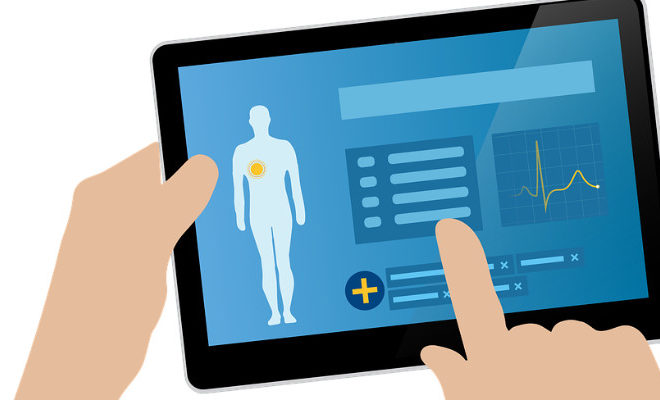Let’s Talk About the Smart Patient Experience
Technology has been a great enabler of change in the healthcare ecosystem. It has a history of improving treatments and revolutionizing patient outcomes. Today, we stand at another cusp of a technological revolution – where technology not only transforms treatments but also gives the patient experience a complete overhaul.
As patient expectations from their healthcare providers continue to rise incrementally, this sector is leaning in towards new technologies and technological developments that aid productivity and weed out inefficiencies. Just like forward-thinking hospitals and healthcare providers are evaluating ‘smart’ technology to make the hospital environment more efficient, they can look at the same technology to make patient experiences smarter as well.
Smart Parking
Anyone who has ever visited a hospital premise will have a parking story to tell. Whether it is navigating the complex web to find a spot to park the car or to find the car post parking…hospital parking spaces lend themselves well to optimization using smart technology.
Using wireless parking sensors, hospital parking spaces can become more patient-friendly. These sensors can communicate free spaces in the right areas and direct the patients to them. The sensors can also count the number of vehicles entering and leaving the parking spaces. As the total number of spaces is defined, occupancy data is calculated and the real-time availability is communicated through digital panels located strategically. It is not only easy to find an available parking space using this technology but is also possible to detect a vehicle in even if the driver goes the wrong way.
Smart Patient Registration
Smart patient registration systems can be a huge boon to the hospital ecosystem (we demonstrated it at our booth at APHM 2018!). When employed, these technologies can eliminate snaking queues at registration and billing counters, labs, pharmacies and overcrowded OPD’s. Using smart technology, patients can schedule medical appointments online with ease.
Smart registration systems eliminate the need for having a paper-based registration system that operates in silos. In a paper-based system, it becomes impossible to combine healthcare information from disparate sources and works for one operator only and in a single workplace. This not only restricts the efficiency of the registration system and end up wasting the time of patient, doctors and associated human resources. Additionally, there is the problem of inadequate information flow. Smart registration systems not only have all the patient-related information, be it health history, medical reports, bills and payment transactions in one place, they also provide information of doctor’s availability and wait times and ensure a smooth entry, consultation and exit of patients. Self-service kiosks help in expediting the registration process, check identification, sign paperwork and manage other registration requirements.
Smart Building
Using the Intelligent infrastructure, hospitals can not only make the hospital building smart but also make sure that the entire ecosystem functions optimally. While smart technology helps in reducing costs for the hospitals by reducing wastage and optimizing efficiencies, it also makes the hospitals safer for patients as well. Smart buildings are not just about energy efficiency or improving environmental performance. They are also about creating a central nervous system for the hospital where all the systems in use can ‘talk’ to one another leveraging a central dashboard. With such a smart system in place, it becomes easier to monitor patients simultaneously. Any anomaly in the patient’s vitals can be monitored proactively and alarms are sounded if immediate intervention is needed. All this information can be viewed on the central dashboard making sure no time is wasted, and the patient is attended to promptly. Smart technologies such as virtual assistants also help in measurably improving the patient experiences during their hospital stay.
Smart Tracking
RFID sensors are making the hospital ecosystem smarter by making them safer and more efficient. RFID tags on hospital equipments mean smarter asset tracking. The hospital staff does not need to waste time searching for equipment or each other when there is a patient that needs to be attended. All misplaced equipment can also be easily located using these tags. This means that the clinicians spend more time taking care of the patients and less time in these activities.
RFID also allows hospitals to track all devices used during surgical procedures in a matter of seconds and thus improves patient safety. RFID tags on patients make sure that patients can be tracked at all times and ensure that they are not in areas unsafe for them. RFID also ensures that incidents of babies gone missing or getting swapped, incorrect medicines or medicine doses, etc. can be eliminated completely and the whole ecosystem is safer for the patients.
Neurotechnology
Neurotechnology or Brain Sensors are novel devices that monitor brain activity. This smart technology employs electrical stimulation to completely understand and control the function of the nervous system. This technology gives doctors an avenue to visualize an individual’s brain using neuroimaging systems and dry electroencephalography (EEG) sensors in conjunction with specialized headsets. The specialized software tracks the brain activity and has the capability to convert it into commands – a surgeon can use this to control a robotic arm to ensure greater precision, individuals can steer a wheelchair by just ‘thinking’ about the action etc. The applications of this technology can be numerous in the hospital ecosystem and can be especially beneficial for remote patient monitoring making the healthcare experience smarter for patients.
The main benefit of the smart ecosystem primarily might be to improve efficiencies and productivity in the hospital environment. For the patient it is much more – with a smart ecosystem, hospitals can engage better with the patient by making information sharing more meaningful and help their patients become more enabled. This helps in completely transforming patients’ expectations from the hospital and their caregivers making the healthcare environment more value-based.




